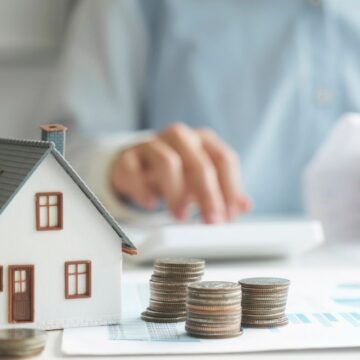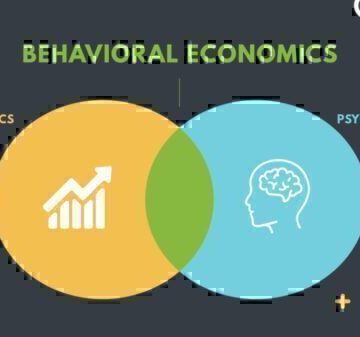Bankruptcy can offer a fresh start, but it comes with long-term consequences and should be carefully considered.
There are different types of bankruptcy, and understanding the differences is key to making the right choice.
A free sessionfree session with a GreenPath financial counselor can help you explore your options before you commit to filing.
Note
This article is intended for informational purposes only and does not constitute legal advice. GreenPath Financial Wellness is not a law firm and does not provide legal services. For guidance specific to your situation, please consult a qualified bankruptcy attorney.
If you’re feeling overwhelmed by debt and struggling to make ends meet, the idea of bankruptcy might feel like both a last resort and a lifeline. And in some cases, it can offer the financial reset people desperately need. But it’s also a major financial step—one with long-term consequences—so it’s important to fully understand what you’re getting into.
What Is Bankruptcy?
Bankruptcy is a legal process designed to help individuals or businesses who can’t pay their debts. When you file for bankruptcy, you’re asking the courts to discharge or reorganize your debts under federal protection. Bankruptcy is governed by bankruptcy law and the bankruptcy code, which set out the rules and procedures for the process.
Depending on the type of bankruptcy you file, some of your debts may be wiped out entirely, while others may be restructured into a manageable repayment plan. Personal bankruptcy cases are handled in bankruptcy court under federal law, where the court oversees the filing, reviews petitions, and manages the legal proceedings.
While bankruptcy is meant to give you a fresh start, it does leave a lasting mark on your credit and can impact your ability to borrow money, rent housing, or even get certain jobs. Understanding the bankruptcy code and the differences between types of personal bankruptcy is important before proceeding.
Common Types of Bankruptcy
Most personal bankruptcies in the U.S. are Chapter 7 or Chapter 13 bankruptcy cases, and bankruptcy filings under these chapters are a common form of debt relief for those struggling with overwhelming debt.
Chapter 7 – Liquidation
Also known as “straight bankruptcy,” Chapter 7 allows you to wipe out most unsecured debts, like credit cards, medical bills, and personal loans. In return, you may have to give up some assets—although many people who file Chapter 7 qualify for exemptions that allow them to keep things like their home, car, or essential belongings.
Some debts, such as certain taxes, child support, and federal student loans, are considered non dischargeable debts and cannot be eliminated through Chapter 7 bankruptcy.
Who it’s for: People with limited income and few assets who can’t realistically pay back their debts.
Pros:
- Fast (typically 3–6 months)
- Discharges most unsecured debt
Cons:
- Fast (typically 3–6 months)
- Discharges most unsecured debt
While most unsecured debts can be wiped out, some assets, such as personal injury settlements, may be considered exempt property depending on state law.
To receive a bankruptcy discharge, you must complete all required steps, including the debtor education course, and the discharge releases you from personal liability for most debts.
Chapter 13 – Reorganization
Chapter 13 is a court-approved repayment plan. You work with the court to develop a plan (typically 3–5 years) to repay all or part of your debts. The plan involves making a monthly payment based on your regular income, and the court may adjust the interest rate on certain debts. This type of bankruptcy allows you to keep your assets, including your home and car, as long as you stay current on the repayment schedule.
Who it’s for: People with regular income who can make consistent monthly payments and can afford to pay back some of their debts over time.
Pros:
- Keep your assets
- Can stop foreclosure or repossession. Chapter 13 can help you catch up on mortgage payments and car loans.
Cons:
- Long process (3–5 years)
- Stays on your credit report for 7 years
In some cases, you may be able to pay off certain secured debts, like a car loan, with a lump sum payment as part of the plan.
What Bankruptcy Can and Can’t Do
Bankruptcy can be powerful, but it’s not a magic wand. Here’s a quick rundown of what it can and can’t do:
Bankruptcy can:
- Stop creditor harassment and wage garnishments
- Pause foreclosure or repossession — and in some cases, help you keep your home or vehicle
- Discharge most unsecured debts, including credit cards and personal loans
- Eliminate medical debt, depending on the circumstances
Bankruptcy can’t:
- Erase secured debts without surrendering the collateral (like a home or car)
- Easily discharge student loans — although recent policy changes may allow relief for some borrowers facing long-term hardship
- Eliminate certain debts like recent tax bills, child support, and alimony
- Protect your co-signer — even if your obligation is wiped out, your co-signer may still be responsible for repayment
Will Bankruptcy Ruin My Credit?
It’s true—filing for bankruptcy will hurt your credit. A Chapter 7 bankruptcy stays on your credit report for 10 years, and Chapter 13 for 7 years. Your credit score may drop significantly, especially at first.
But here’s the thing: if your credit has already taken a hit due to missed payments, maxed-out cards, or collections, bankruptcy might not cause as much additional damage as you’d expect. For some people, it’s the first step toward rebuilding.
And yes, you can rebuild your credit after bankruptcy. It takes time and discipline, but many people qualify for a secured credit card or even a car loan within a couple years of filing.
What Does the Bankruptcy Process Involve?
Filing for bankruptcy isn’t just filling out a form—it’s a structured legal process. Careful preparation is essential, and you will need to gather financial documents such as pay stubs and bank account statements.
Here’s what typically happens:
- Credit Counseling: Before filing, you must complete a credit counseling course from an approved provider. A certified credit counselor will review your finances, help with budget planning, and explain bankruptcy alternatives. You’ll receive a certificate required for filing.
- Filing the Petition: You or your bankruptcy attorney will file the bankruptcy petition and required forms with the bankruptcy court. Filing fees apply unless waived. Once submitted, your case receives a bankruptcy case number for tracking.
- Automatic Stay: Filing triggers an automatic stay, which halts most collection actions—like creditor calls, lawsuits, wage garnishments, and foreclosures—while your case is under federal court protection.
- Meeting of Creditors: At the 341 meeting, a bankruptcy trustee and creditors may ask questions about your finances. The trustee reviews your case, while the judge handles any disputes and final approvals.
- Resolution: In Chapter 7, eligible debts are discharged after court approval. In Chapter 13, you’ll follow a court-approved repayment plan. Completion of a debtor education course is required for discharge.
Note
Free legal services may be available if you cannot afford a bankruptcy lawyer.
Should I File Bankruptcy?
This is the million-dollar question. Bankruptcy might make sense if:
- You’re drowning in debt and can’t see a way out
- You’re facing foreclosure or repossession
- Your household income is below 150% of the federal poverty line, which may qualify you for fee waivers or specific bankruptcy chapters
- Your wages are being garnished
- You’ve already tried budgeting or debt repayment programs without success
Understanding your overall financial health and the factors affecting your finances is crucial for making the right choice. If your situation is more temporary, or if your debt load is manageable with help, bankruptcy might not be necessary. Having regular income may also make you eligible for certain types of bankruptcy or alternative debt relief options.
Explore All Your Options First
Before jumping into bankruptcy, it’s wise to explore alternativesexplore alternatives. Debt relief options, such as consumer credit counseling, may help you avoid bankruptcy. Some other paths to consider:
- Debt Management Programs – These can help lower interest rates and consolidate payments without taking out a new loan. GreenPath offers a structured Debt Management Program (DMP)Debt Management Program (DMP) designed to help you pay off debt within 3-5 years.
- Financial Counseling – A nonprofit financial counselor or credit counselor can help you review your entire situation, explain your options for debt relief, and help you understand the implications of bankruptcy laws and whether consumer credit counseling is a better alternative.
- Debt Settlement – This involves negotiating with creditors to settle your debt for less than you owe. Be cautious: settlement can damage your credit and involve fees.
Talk to Someone You Can Trust
Bankruptcy is complicated—and deeply personal. You don’t have to figure it out alone.
Our certified financial counselors help thousands of people each year explore their options. In a free, confidential session, we’ll review your full financial picture and help you decide whether bankruptcy is the right step—or if there’s another solution that better fits your goals.
Understanding how bankruptcy works is key to making an informed decision. And if you do choose to file, a qualified bankruptcy attorney can guide you through the legal process and ensure everything is handled correctly.
You Might Also Be Interested In…
GreenPath Financial Service
Debt Management Program
GreenPath is a 60-year trusted national nonprofit, learn how GreenPath’s Debt Management Program can help you pay off your debt in 3-5 years, while helping you develop sound financial literacy.










